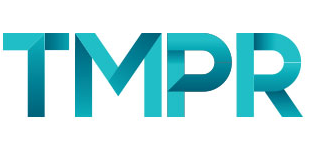Create Powerful Case Studies & Testimonials!
Potential customers and clients want to know that your company has clients who are completely satisfied. This supports the notion that your company offers quality products, expert services, and exceptional customer support.
This evidence often comes in the form of testimonials and case studies, both of which have an important place in your marketing content library. So here is TMPR’s guide to effective case studies and testimonials…
Testimonials
Client testimonials are short, focused quotes — typically no more than a few sentences — from customers willing to speak on the record about a specific aspect of your business. For example: a testimonial about the quality of a product, or its multiple uses; the warranty or customer service provided by your company; or an expert and responsive technical support or implementation team. Testimonials are useful for web content, social media output and for quotes used by journalists and bloggers.
Case studies
Case studies are more in-depth stories that usually follow a challenge-solution-results structure and can touch on a number of topics related to how your company met a customer’s need or solved a problem and produced measurable results. They are often the result of several interviews and multiple drafts.
An important difference is that sometimes a testimonial can be obtained from a customer with only the individual’s approval to use their quote, whereas a case study often must go through more formal approval channels with the customer, including their marketing and sales departments.
Ways to use customer testimonials
- Add them as sidebars to relevant web pages
- Compile a number of testimonials into a single marketing collateral piece
- Add testimonials to proposals or letters to potential customers
- Use testimonials on campaign landing pages
- Include them as slides in a presentation
- Use them in relevant press releases
- Create testimonials as brief videos, in addition to print
Ways to use case studies
- Create a library of case studies in PDF format that can be downloaded from your web site
- Send them to potential customers by e-mail as part of lead-nurturing programs
- Include them as downloads when exhibiting at a virtual event
- Use them to pitch stories to media outlets such as industry web sites and online publications
Ask the right questions
The testimonials you get from customers will only be as compelling as the questions you ask them to answer and provide a quote for. Here are some example questions that can elicit compelling answers.
- What is the single greatest benefit you realised in working with our company?
- What is the single greatest benefit you realised by using our product/service?
- How would you describe the return on investment you achieved by using a product or working with the company?
- What might have happened if you had not chosen to work with our company or invest in our product/service?
- What advice would you give to other companies who are in the market for a type of product or service?
- How would you describe your overall experience working with our company?
Developing an effective case study typically involves a more in-depth interview, as well as expansive or open-ended questions around the customer’s challenge, solution selected, and return on investment. Here are some examples:
The problem
- Describe the business problem/challenge that you were trying to solve.
- What impact did this problem have on your business?
- How have you addressed this issue in the past?
The solutions
- How did you hear about our company/product?
- Why did you decide to use us/it for your solution?
- Briefly describe the solution and how it was deployed.
- Comment on the people you worked with?
The results
- Tell us how the solution helped solve your business problem/challenge.
- What benefits did you derive from the solution?
- What has been the measurable impact on your business of deploying this solution (i.e., increase in revenues, savings/productivity gains, safety gains, or return on investment)?
How to develop effective case studies and testimonials
Work with your sales and customer support teams to identify customers who would make good candidates for a testimonial or case study. Have the sales person make the introduction. Ask about their willingness to participate and how the approval process at their company will work. Find out who will sign off on the testimonial or case study.
Let customers know you are recording all interviews; also keep e-mail correspondence to have an audit trail for customer quotes.
Reassure the customer or client that nothing they have said will be used until they have given their full written approval.
Download the ‘TMPR Guide to Powerful Case Studies & Testimonials’ here.
